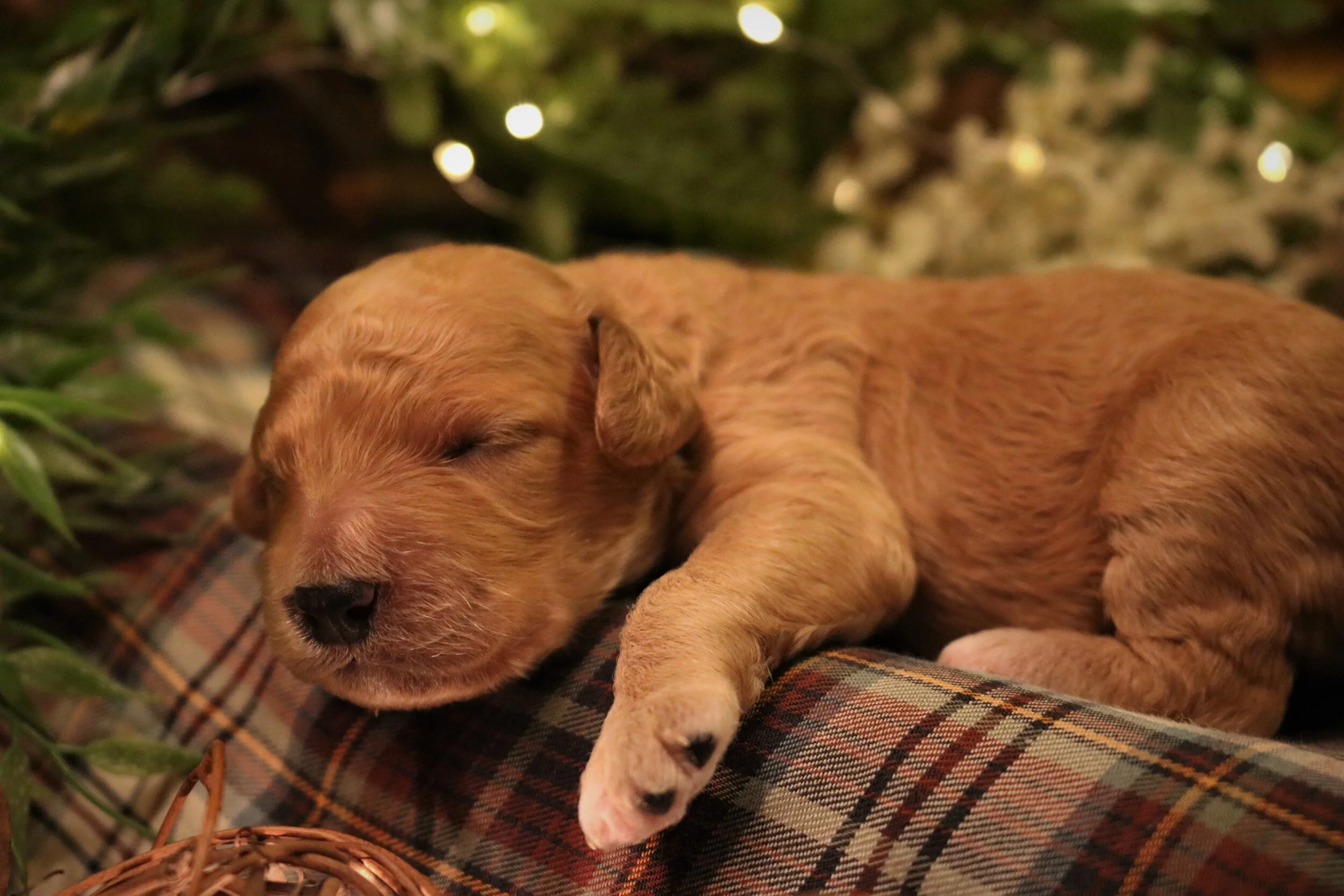Curls & Shedding
Regarding curliness and shedding, clients can often get overwhelmed by the information available. While I cannot guarantee this information is always easy to digest, I believe that the information below will be helpful for anyone looking to answer basic or advanced questions about shedding!
There are a few very important genetic factors we look at when considering the propensity to shed with pups and their coats. Since some of you mentioned curliness and shedding as a factor in your adoption process, I hope some of this information is helpful in your decision making. If you are not purchasing one of our pups, I’m sure this information will be helpful regardless! If you are purchasing from another breeder, you should ask if they have genetically tested their dogs for the following alleles/loci. If allergies are a big concern for a family, please do the added research and find yourself a breeder that has done the same. I promise, it will help.
ps- a refresher in Gregor Mendel’s pea plant experiment with a punnett square will do wonders for you here! Think basic, inherited traits from mom and dad.
Here is a link for a Youtube tutorial, and more information below!



Sebastian is single factored for curliness (R/r) like Max and Kona, but is double-factored for non-shedding genes (sd/sd).
Kona is actually identical (double non-shedding genes with a curl/non-curl gene combination). Kona is just like Sebastian in that she has double, non-shedding genes (sd/sd or n/n depending on the chart you’re viewing). “N” can often be used as a placeholder for the “recessive” or non-wild type gene, in this case we’re discussing non-shedding. Some charts use a lowercase “sd” for non-shedding designation. Regardless, this new information means that 100% of their offspring will express 100%, heterozygous genes for non-shedding (they will ALL be “sd/sd” instead of SD/sd or SD/SD)
Maxine is the exception with only one non-shedding gene (expressed as “n/SD” or “sd/SD”). This means she will have more fluffy or light curled puppies, still with non-shedding genes; whereas Kona will have a higher likelihood for curly-curl pups.
These combinations are actually better all around with regards to shedding, rather than strictly focusing on curliness as the cure all for allergies. Breeding multigenerational Cockapoos requires a knowledge of genetics. Many breeders can avoid having to genetically test or worry about shedding by simply breeding a purebred to a poodle, or a first generation doodle to a purebred poodle. This creates F1b’s or “minis” that will be curly regardless, but remember, curl doesn’t translate to non-shedding or no allergies.
We streay away from pure curliness, and instead aim more for a Cockapoo with genetically dominant, non-shedding genes (which can include curliness, but is not a requirement). From my research, this seems to be best with regards to grooming and hygiene as well. A majority of our puppies will have wavy, loose curls rather than tight ringlets, but still express hardly any shedding due to each parent’s double non-shed genes. Like a curve, most puppies fall in the middle with light curls and very low shedding. There are puppies that fall on either end of that spectrum as well, with some being curly-curly, and others having a fluffy coat.
With Seb having two dominant non-shedding genes, and Kona having two dominant non-shedding genes, it is inevitable that all puppies will have 100% sd/sd genetic expression. However, it is important to understand the multiple factors that go into coat curls and shedding; please follow this link to Pawprint Genetics for a detailed description. Nonetheless, some pups may have fluffy coats due to each parent being 50/50 for curly and “smooth” coats…meaning a small percentage of puppies may receive two recessive genes for a fluffy coat, but still be low shedding.
To make things simpler, I found a fantastic website that explains more. Additionally, they have a great graph that shows roughly where our pups would fall genetically.
Another great link here shows the 0-4 grading scale used to estimate shedding.
Please utilize these resources to their fullest to better help yourself and your family when considering allergies!


